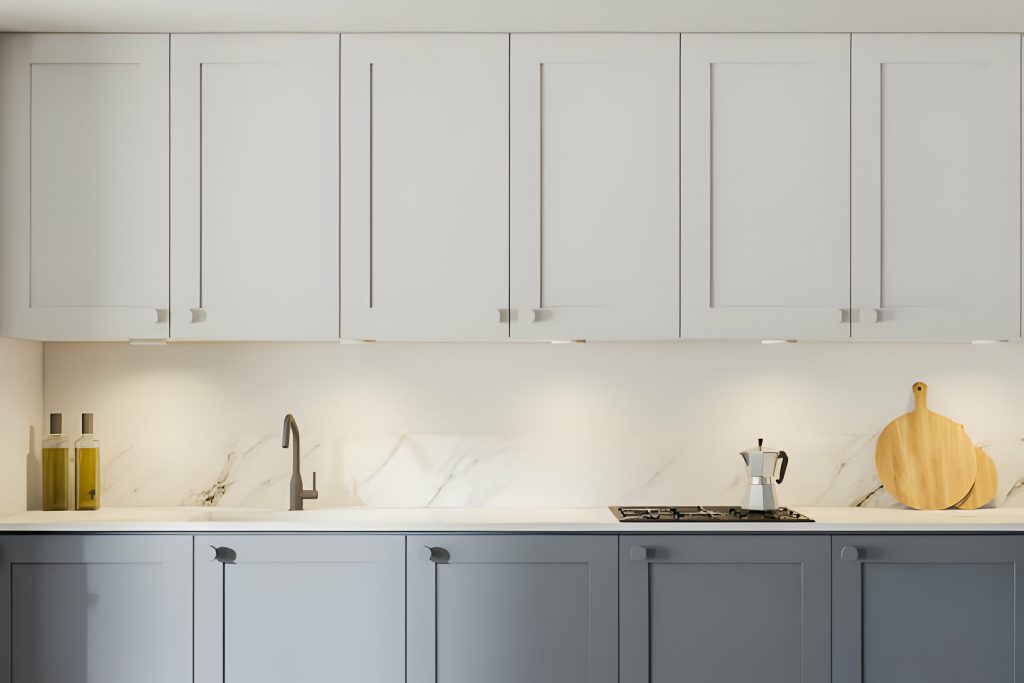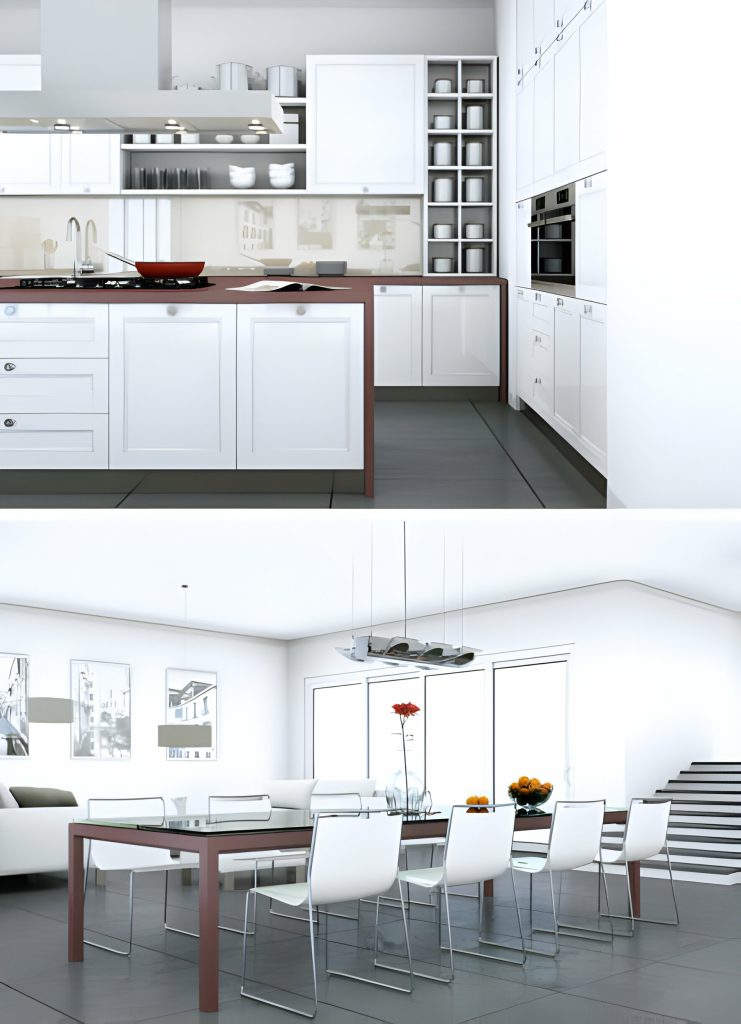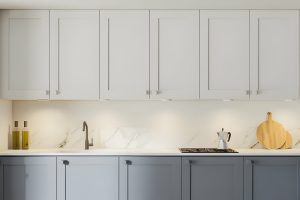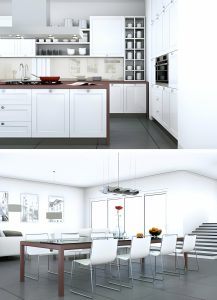Are your kitchen cabinet doors constantly slamming shut, causing a racket in your home? Don’t worry, there are simple solutions to silence the noise. In this article, we will guide you through the steps to stop the annoying banging of your cabinet doors. You’ll learn how to adjust hinge tension, install soft-close hinges, use door bumpers or stoppers, add cushioning materials, apply adhesive felt pads, and consider magnetic door catches. Say goodbye to noisy cabinet doors once and for all!
Adjusting Hinge Tension
To adjust the hinge tension, you can use a screwdriver to tighten or loosen the screws on the hinges. This is a simple yet effective way to address the issue of noisy cabinet doors slamming shut. By adjusting the tension, you can ensure that the doors close smoothly and quietly, eliminating any unnecessary noise and preventing damage to the cabinets.
To begin, locate the screws on the hinges that hold the door in place. These screws are typically found on the top and bottom corners of the hinge. Using a screwdriver, turn the screws clockwise to tighten them or counterclockwise to loosen them. By tightening the screws, you increase the tension on the hinge, making the door close more slowly. Conversely, loosening the screws decreases the tension, allowing the door to close more quickly.
It is important to note that adjusting the hinge tension may require some trial and error. Start by making small adjustments and then test the door to see if the desired results have been achieved. If the door still slams shut or doesn’t close properly, continue making adjustments until the tension is just right.
Installing Soft-Close Hinges
Install soft-close hinges for a noise-free closure of your kitchen cabinet doors. These hinges are specifically designed to reduce noise and minimize impact when closing cabinet doors. By installing them, you can enjoy a quieter and more peaceful kitchen environment.
Soft-close hinges work by utilizing a hydraulic mechanism that slows down the closing speed of the cabinet door. This mechanism prevents the door from slamming shut and instead ensures a gentle and controlled closure. The hydraulic system is integrated into the hinge itself, making it a discreet and effective solution for reducing noise.
To install soft-close hinges, follow these simple steps:
- Remove the existing hinges from the cabinet door and frame.
- Align the new soft-close hinges with the pre-drilled holes in the cabinet door and frame.
- Secure the hinges in place using screws or mounting plates provided.
- Test the door to ensure smooth and quiet closing. Adjust the hinges if necessary.
Using Door Bumpers or Stoppers
To prevent the noise of kitchen cabinet doors from slamming, you can effectively use door bumpers or stoppers. These simple yet effective devices can help reduce the noise caused by slamming cabinet doors, providing a quieter and more peaceful kitchen environment. Here are three DIY solutions for noise reduction methods:
- Self-adhesive bumpers: These small rubber or silicone bumpers can be easily attached to the corners of cabinet doors. They act as buffers, absorbing the impact and preventing the doors from slamming shut. Self-adhesive bumpers are affordable and can be found at most hardware stores.
- Magnetic door stoppers: Magnetic door stoppers are another great option for preventing cabinet doors from slamming. They consist of a magnet attached to the cabinet frame and a metal plate attached to the door. When the door is closed, the magnet holds it in place, preventing it from slamming shut.
- Silicone door stoppers: Silicone door stoppers are flexible and durable, making them ideal for preventing cabinet doors from slamming. They can be placed on the inside corners of cabinet doors, providing a cushioning effect and reducing the noise caused by slamming.
Adding Cushioning Materials
Enhance the noise reduction of your kitchen cabinet doors by incorporating cushioning materials. Adding cushioning materials is a simple and effective way to reduce the noise caused by slamming cabinet doors. By placing these materials strategically, you can minimize the impact and vibrations that cause the loud noise. There are various types of cushioning materials available, including adhesive pads, foam strips, and rubber bumpers.
Here is a table highlighting some commonly used cushioning materials and their properties:
| Material | Description |
|---|---|
| Adhesive pads | Thin pads with adhesive backing that can be easily attached |
| Foam strips | Soft and flexible strips that provide cushioning and noise reduction |
| Rubber bumpers | Durable bumpers made of rubber that absorb impact and reduce noise |
To use these cushioning materials, simply clean the surface where you will be attaching them, peel off the backing, and press them firmly onto the desired area of the cabinet door. Make sure to place them strategically to ensure maximum noise reduction.
These DIY solutions are cost-effective and require minimal effort to install. By incorporating cushioning materials, you can enjoy a quieter and more peaceful kitchen environment while also prolonging the lifespan of your cabinet doors.
Applying Adhesive Felt Pads
To further reduce the noise caused by slamming kitchen cabinet doors, continue by applying adhesive felt pads to the appropriate areas. Adhesive felt pads are an effective soundproofing technique that helps prevent door vibrations and minimize noise. By placing these pads strategically, you can create a cushioning effect that absorbs the impact of the door closing, significantly reducing the noise level in your kitchen.
Here are three key areas where you should apply adhesive felt pads:
- Cabinet Frame: Attach the felt pads to the inside of the cabinet frame, where the door makes contact when closed. This helps to dampen the impact and prevents the door from slamming against the frame, reducing noise.
- Door Edges: Apply the pads along the edges of the cabinet door itself. This ensures that when the door closes, it does so gently, minimizing vibrations and noise.
- Door Stops: Place felt pads on the door stops, which are the small protrusions on the cabinet frame that the door rests against when closed. By adding cushioning to these stops, you can further absorb any impact and eliminate noise caused by the door hitting against them.
Considering Magnetic Door Catches
To further enhance the effectiveness of reducing noise from slamming kitchen cabinet doors, consider using magnetic door catches. Magnetic door catches are an excellent alternative door closing mechanism that can significantly minimize the noise caused by cabinet doors. These catches work by utilizing the power of magnets to hold the doors securely in place, preventing them from slamming shut.
One of the advantages of magnetic door catches is their ability to work with various cabinet door materials. Whether your cabinet doors are made of wood, glass, or metal, magnetic catches can effectively reduce noise levels. The magnetic force ensures a secure closure without the need for excessive force, resulting in a gentle and quiet door closing experience.
When exploring alternative door closing mechanisms, it is essential to consider the impact of cabinet door materials on noise levels. Some materials, such as wood or glass, can create louder slamming noises compared to others. By using magnetic door catches, you can mitigate these noise levels and create a more peaceful kitchen environment.





